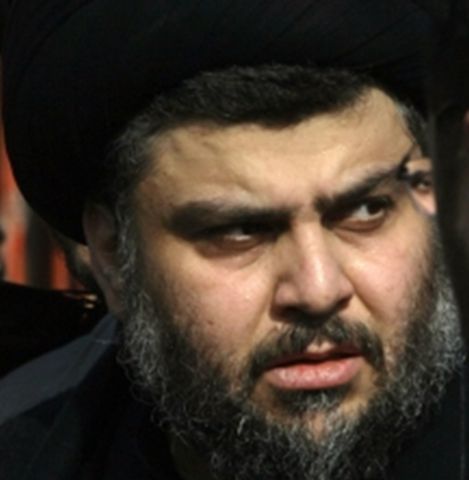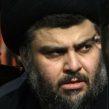
Security Implications of Muqtada al-Sadr’s Return to Iraq
Publication: Terrorism Monitor Volume: 9 Issue: 2
By:

Muqtada al-Sadr, the firebrand Iraqi Shi?a cleric whose militia experienced a major military defeat by the government of Prime Minister Nuri al-Maliki, stated angrily in April 2008: “The occupation has made us the target of its planes, tanks, air strikes and snipers. Without our support this government would not have been formed” (al-Jazeera, April 21, 2008). More than two years later al-Maliki came to realize the significance of the statement when he met with al-Sadr in the Iranian city of Qom in a bid to obtain his political backing to form a government and end the political deadlock that had paralyzed Iraqi politics since the March 2010 elections (Al-Alam TV, October 18, 2010).
The January 5 return of al-Sadr to Iraq from Iran, where he had been studying in the theological center of Qom, only solidified the fact that al-Sadr and his political movement will continue to play a critical role in the future of Iraq’s politics (al-Jazeera, January 5; Voice of Iraq, January 5). Al-Sadr’s support is based in the impoverished urban areas of Shi?a Iraq, where Sadrist politicians won 40 seats in the parliamentary elections. What remains uncertain is the exact role al-Sadr will play in the country’s security. Is al-Sadr’s return to Iraqi politics good news? Or is it a revival of a darker era of Iraq’s post-Ba’athist history that could pull U.S. and Iraqi forces back to the battlefields of the pre-surge period?
There are several factors that will determine the outcome. First and foremost is the possible return of the Mahdi Army as a militia force. The Mahdi Army has a long history of destabilizing the country in the post-war era, especially in the sectarian conflict between 2006 and 2007, a period which witnessed the deaths of thousands of Iraqi civilians.
The young cleric terminated his group’s military operations in 2008, renaming the group “Mumahidun” (“Those who pave the path”) and arming it with a cultural mission to provide public service to Iraqis. It is highly probable that since 2008 al-Sadr has aimed to restructure the militia’s fighters into organized units that remain loyal to him alone (al-Jazeera, August 28, 2008; IRNA, August 8, 2008; al-Jazeera, January 11, 2010). This is evident from his Najaf speech on January 8, when he stated that armed military forces were for “people of weapons only” (Al-Arabiya, January 8, 2010). Though such an assertion refers mainly to the Iraqi army, the reference to “people of weapons” could also refer to his militia members who have been trained and possibly assigned to work with the state army to maintain order and security. More importantly, the statement appears to serve as a warning to possible splinter groups within his movement like the Ahrar bloc, which may want to challenge him as he aims to restore his authority in Iraq (Aswat al-Iraq, October 17, 2010).
The militia problem leads to the second factor – sectarian conflict. While intra-Shi?a tensions could re-emerge as a major dilemma for the Iraqi government as the new regime is institutionalized in the next few months, sectarian conflict could also re-surface. As al-Sadr’s political faction takes over seven governmental ministries and gains considerable leverage over al-Maliki’s government, the new political ambience created by the Sadrists could provoke Sunni militant groups to unleash a new wave of violent activities. It might also foster greater Sunni dissatisfaction with the political process, which has left the Sunni minority out in the cold since al-Maliki’s return to power as the Prime Minister with al-Sadr’s support (al-Jazeera, January 5, 2010).
Third, when talking about al-Sadr’s return to Iraq, Iran always looms in the background. Despite being a nationalist, al-Sadr has relied on Tehran’s support since 2007, especially against the threat of Mahdi Army splinter groups (see Terrorism Monitor, March 1, 2007). What remains uncertain is the nature of Iranian influence over al-Sadr. Tehran is fully aware of al-Sadr’s influence in Iraq, and it appears the Iranian hardliners in power have no plan to get involved in Iraqi politics without coordinating their efforts with al-Sadr. One may argue that the return of al-Sadr and the visits of Iran’s foreign minister, Ali Akbar Salehi, to Baghdad, where he met with al-Maliki, and to Najaf, where he met Grand Ayatollah Sistani, reflect a coordinated effort by Tehran to send a message to the United States regarding the depth of Iran’s influence over Iraqi politics.
Finally, there is the issue of U.S. troop withdrawal. In his Najaf speech, al-Sadr underlined his first and foremost political-military objective – to resist the U.S. occupation (al-Arabiya, January 8; Press TV, January 8). Most American troops are due to leave Iraq by the end of 2011, but the small number of troops who will stay in the country on training missions or to protect U.S. facilities and institutions like the Baghdad Embassy could provide an excuse for the Sadrists to continue their anti-occupation rhetoric and expand the Mahdi organization into an active militia unit. This, ultimately, could mark the return of al-Sadr not as a statesman, but as an anti-occupation populist.




